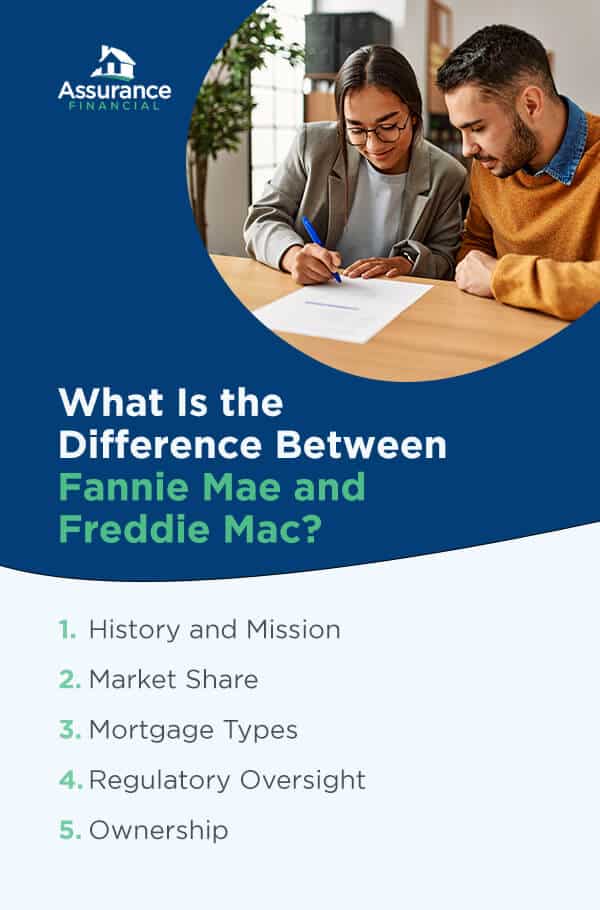Fannie Mae and Freddie Mac are two government-sponsored entities (GSEs) that play a significant role in the United States housing market by providing liquidity to the mortgage market. Over the years, there has been a lot of debate about the roles and responsibilities of these two entities.
Below, we will explore the differences between Freddie vs. Fannie and how to determine which may be right for you.
What Is Fannie Mae and Freddie Mac?
Below, we cover more about Fannie Mae and Freddie Mac.
What Is Fannie Mae?
Fannie Mae is a GSE that was established by Congress in 1938. Its purpose is to provide liquidity and stability to the housing market by buying mortgages from home loan lenders and securitizing them into mortgage-backed securities (MBS) that are sold to investors.
By purchasing mortgages from lenders, Fannie Mae helps to ensure that there is a steady supply of mortgage funds available to homebuyers. The securitization of these mortgages into MBS also helps to spread risk across a broad range of investors, which helps to make the housing finance system more resilient.
Fannie Mae is not a direct lender, but it does set underwriting guidelines and works with lenders to ensure that the loans they originate meet those guidelines. Fannie Mae is regulated by the Federal Housing Finance Agency (FHFA) and is one of two GSEs, the other being Freddie Mac.
What Is Freddie Mac?
Freddie Mac is a GSE that was created by Congress in 1970. Like Fannie Mae, its primary mission is to help make the housing market more stable. Like Fannie Mae, Freddie Mac is regulated by the FHFA.
Freddie Mac works with a network of lenders across the country to purchase conventional mortgages and package them into securities that are sold to investors. By doing so, Freddie Mac helps to ensure that there is a steady flow of funds available for mortgage lending, which in turn helps to keep interest rates stable and affordable for homebuyers.
Freddie Mac also plays a role in setting underwriting standards for the loans it purchases, working with lenders to help ensure that the loans they originate meet those standards. In addition, Freddie Mac has a mandate to support affordable housing and community development initiatives, which it does through various programs and partnerships.
What Does Fannie Mae and Freddie Mac Stand For?
Fannie Mae stands for the Federal National Mortgage Association. Freddie Mac, on the other hand, stands for the Federal Home Loan Mortgage Corporation.
Both Fannie Mae and Freddie Mac are publicly traded companies, but they are also under the conservatorship of the federal government, which means that the government has taken control of their operations to stabilize and strengthen them.
Are Fannie Mae and Freddie Mac the Same?
Fannie Mae and Freddie Mac are two separate entities, but they have a similar business model and operate in the same industry. Both entities were created to provide liquidity to the U.S. mortgage market by purchasing mortgages from lenders, pooling them together and then selling them as mortgage-backed securities to investors.
While their missions and structures are similar, there are some differences between Fannie Mae and Freddie Mac. Despite these differences, both Fannie Mae and Freddie Mac have played a significant role in the U.S. housing market, and their actions have had a significant impact on the availability and cost of home loans for American borrowers.
How Do I Know if My Mortgage Is Fannie Mae or Freddie Mac?
If you want to find out if your mortgage is owned or backed by Fannie Mae or Freddie Mac, you can follow these steps:
- Find your mortgage statement or payment book.
- Look for the name of the company that services your mortgage. This is the company that collects your mortgage payments and handles your account.
- Visit the Fannie Mae Loan Lookup tool or the Freddie Mac Loan Look-Up tool on their respective websites.
- Enter your personal information, such as your name, address and the last four digits of your Social Security number to verify your identity.
- Follow the instructions to see if your mortgage is owned or backed by Fannie Mae or Freddie Mac.
If your mortgage is owned or backed by Fannie Mae or Freddie Mac, you may be eligible for certain benefits or programs, such as loan modifications or refinancing options, so it’s important to know which entity holds your mortgage.
What Is the Difference Between Fannie Mae and Freddie Mac?
While Fannie Mae and Freddie Mac have similar business models and operate in the same industry, there are some key differences between the two entities:
1. History and Mission
Fannie Mae and Freddie Mac have similar histories and missions, as both were established by Congress as GSEs to provide liquidity and stability to the U.S. housing market. However, there are some differences in their histories and missions.
Fannie Mae was established in 1938 as part of President Franklin D. Roosevelt’s New Deal to help create more affordable housing options for Americans. The organization was originally a part of the government but was later privatized in 1968.
Freddie Mac, on the other hand, was established in 1970 to provide competition to Fannie Mae and increase liquidity in the mortgage market. Freddie Mac’s mission is similar to Fannie Mae’s in that it buys mortgages from different lenders and securitizes them into MBS, but it also focuses on supporting smaller banks and thrifts that may not have access to the same resources as larger lenders.
Another difference between Fannie Mae and Freddie Mac is their ownership structure. Fannie Mae was privatized in 1968 and is owned by shareholders, while Freddie Mac is still owned by the federal government.
2. Market Share
Fannie Mae and Freddie Mac have historically had similar market shares in the U.S. housing finance system. However, there have been some differences in their market shares over time.
In the years leading up to the financial crisis of 2008, Fannie Mae and Freddie Mac held a dominant position in the U.S. mortgage market. However, after the financial crisis, the government took over both companies and implemented changes to their operations to reduce their risk to taxpayers. As a result, their market share has since declined.
Fannie Mae and Freddie Mac still play a significant role in the U.S. housing market, but their market share has decreased. This is due in part to the growth of non-bank lenders and other private sector entities that have entered the mortgage market in recent years.
While Fannie Mae and Freddie Mac have similar market shares, there are some differences in the types of loans they purchase and securitize.
3. Mortgage Types
Fannie Mae and Freddie Mac both purchase and securitize various types of mortgage loans, but there are some differences in the types of loans they focus on.
Fannie Mae’s main focus is on conventional, conforming loans. These are loans that meet Fannie Mae’s underwriting and eligibility standards and conform to loan limits set by the FHFA. Fannie Mae’s loan limits vary by geographic location and are adjusted annually to reflect changes in housing prices. Fannie Mae also purchases loans that are insured by the FHA or guaranteed by the Department of Veterans Affairs (VA).
Freddie Mac also purchases conventional, conforming loans, but it has a stronger focus on multifamily loans. Multifamily loans are loans that are used to finance properties with five or more units, such as apartment buildings. Freddie Mac is the leading source of financing for multifamily properties in the U.S. and has specific loan products tailored to the needs of multifamily borrowers. Freddie Mac also purchases loans that are insured by the FHA or guaranteed by the VA.
4. Regulatory Oversight
Fannie Mae and Freddie Mac are both regulated by the FHFA, but there are some differences in their regulatory oversight.
The FHFA was established in 2008 as part of the Housing and Economic Recovery Act (HERA) in response to the financial crisis, with the primary responsibility of overseeing Fannie Mae, Freddie Mac and the Federal Home Loan Banks (FHLBs).
One key difference in regulatory oversight is that Fannie Mae is subject to more restrictive regulatory capital requirements than Freddie Mac. This means that Fannie Mae must hold more capital on its balance sheet to protect against losses than Freddie Mac does. Fannie Mae has historically had a larger portfolio of mortgage assets than Freddie Mac.
Another difference is that Fannie Mae is subject to a higher affordable housing goals target than Freddie Mac. As part of their mission to support affordable housing, both Fannie Mae and Freddie Mac are required to meet certain goals for the percentage of their business that is dedicated to serving low- and moderate-income families. However, Fannie Mae’s affordable housing goals are generally higher than Freddie Mac’s.
Both Fannie Mae and Freddie Mac are subject to significant regulatory oversight by the FHFA to ensure their safety and soundness and their ability to fulfill their mission of providing liquidity and stability to the U.S. housing market.
5. Ownership
Fannie Mae and Freddie Mac are both publicly traded companies, but there are some differences in their ownership structures.
Fannie Mae was originally established as a GSE and owned by private shareholders until it was placed into conservatorship by the U.S. government. Since then, Fannie Mae has been under the control of the FHFA, which serves as its conservator. The U.S. Treasury also holds senior preferred stock in Fannie Mae, which provides a source of funding for the company.
Freddie Mac was also originally established as a GSE and was owned by private shareholders until it was placed into conservatorship by the U.S. government. Since then, Freddie Mac has also been under the control of the FHFA as its conservator, and the U.S. Treasury holds senior preferred stock in the company.
While Fannie Mae and Freddie Mac are both publicly traded companies, their ownership structures are different from those of typical publicly traded companies. As GSEs, Fannie Mae and Freddie Mac were created by Congress to fulfill a specific public purpose and their operations are subject to significant regulatory oversight by the FHFA and other federal agencies.
Similarities Between Fannie Mae and Freddie Mac
Fannie Mae and Freddie Mac share many similarities, as they both operate in the same industry and have similar missions and business models.
- Business model: Both entities were created to provide liquidity to the U.S. mortgage market through the same process.
- Government-sponsored: Fannie Mae and Freddie Mac are both GSEs that operate in the private sector but have a public mission.
- Loan limits: Both entities have loan limits that determine the maximum amount of money that can be borrowed for a mortgage. These loan limits are set by the FHFA and are adjusted annually based on changes in home prices.
- Role in the housing market: Fannie Mae and Freddie Mac both play a significant role in the housing market by providing liquidity and stability to the mortgage market, which in turn helps to increase homeownership rates and provide affordable housing options.
- Impact on borrowers: The actions of Fannie Mae and Freddie Mac have a significant impact on borrowers, as they influence the availability and cost of home loans. Borrowers who obtain mortgages backed by Fannie Mae or Freddie Mac may be eligible for certain benefits or programs.
Which Is Best For You?
Whether Fannie Mae or Freddie Mac is best for you depends on various factors, such as your financial situation, the type of mortgage you need and your eligibility for certain programs or benefits.
Keep in mind that Fannie Mae and Freddie Mac are not lenders themselves — they are companies that purchase mortgages from home loan lenders and then sell them as mortgage-backed securities to investors. So, ultimately, the decision of which lender to use will depend on your individual needs and preferences.
Here are some things to consider when deciding between Fannie Mae and Freddie Mac:
- Mortgage type: If you need a conventional mortgage, either Fannie Mae or Freddie Mac could be a good choice. However, if you need a government-backed mortgage, such as an FHA or VA loan, you will need to look elsewhere.
- Loan limits: Fannie Mae and Freddie Mac have different loan limits, so you may want to check which entity offers loan limits that are most suitable for your needs.
- Eligibility for programs: If you are having trouble making your mortgage payments, you may be eligible for certain programs or benefits through Fannie Mae or Freddie Mac. However, the eligibility requirements and programs offered may differ between the two entities, so it’s important to check with both.
- Interest rates: Interest rates can vary between lenders and can change frequently, so it’s important to shop around and compare rates from different lenders, including those who sell mortgages to Fannie Mae or Freddie Mac.
Ultimately, it’s best to do your research and compare your options to find the best lender and mortgage product for your individual needs and financial situation.
What to Consider When Applying for a Mortgage
When applying for a mortgage, here are some factors to consider:
- Interest rates: The interest rate is one of the most important factors when choosing a mortgage lender. You’ll want to compare rates from different lenders to ensure you’re getting the best deal.
- Fees: Lenders may charge fees for origination, processing and other services. Ask about these fees upfront and compare them with other lenders.
- Customer service: Good customer service is important, especially when dealing with a complex financial transaction like a mortgage. You’ll want to choose a lender that is responsive and communicative throughout the loan process.
- Mortgage products: Different lenders may offer different types of mortgages, such as fixed-rate or adjustable-rate mortgages. You’ll want to choose a lender that offers the type of mortgage that best fits your needs.
- Reputation: Look for a lender with a good reputation in the industry. You can check online reviews and ratings from other borrowers, as well as the lender’s track record and history.
Keep in mind that every borrower’s situation is unique and what’s most important to you may differ from someone else. Do your research and compare your options to find the best mortgage lender for your individual needs.
Apply for a Mortgage From Assurance Financial
Below are some advantages of getting a mortgage from a reputable lender like Assurance Financial:
- Competitive rates: We offer competitive interest rates that can save you money over the life of your mortgage.
- Loan options: We offer a variety of loan options, such as conventional, FHA, VA and jumbo loans, that can be tailored to your specific needs.
- Expertise: We have experienced loan officers who can guide you through the mortgage process and help you find the best loan for your needs.
- Flexibility: We will be flexible in working with you to find a solution that fits your unique financial situation.
- Customer service: We prioritize excellent customer service, providing clear communication and support throughout the mortgage process.
- Streamlined process: We have a streamlined process for mortgage applications and approvals, saving you time and hassle.
Contact us at Assurance Financial to learn more about Freddie Mac vs. Fannie Mae or apply for a mortgage with us today.






